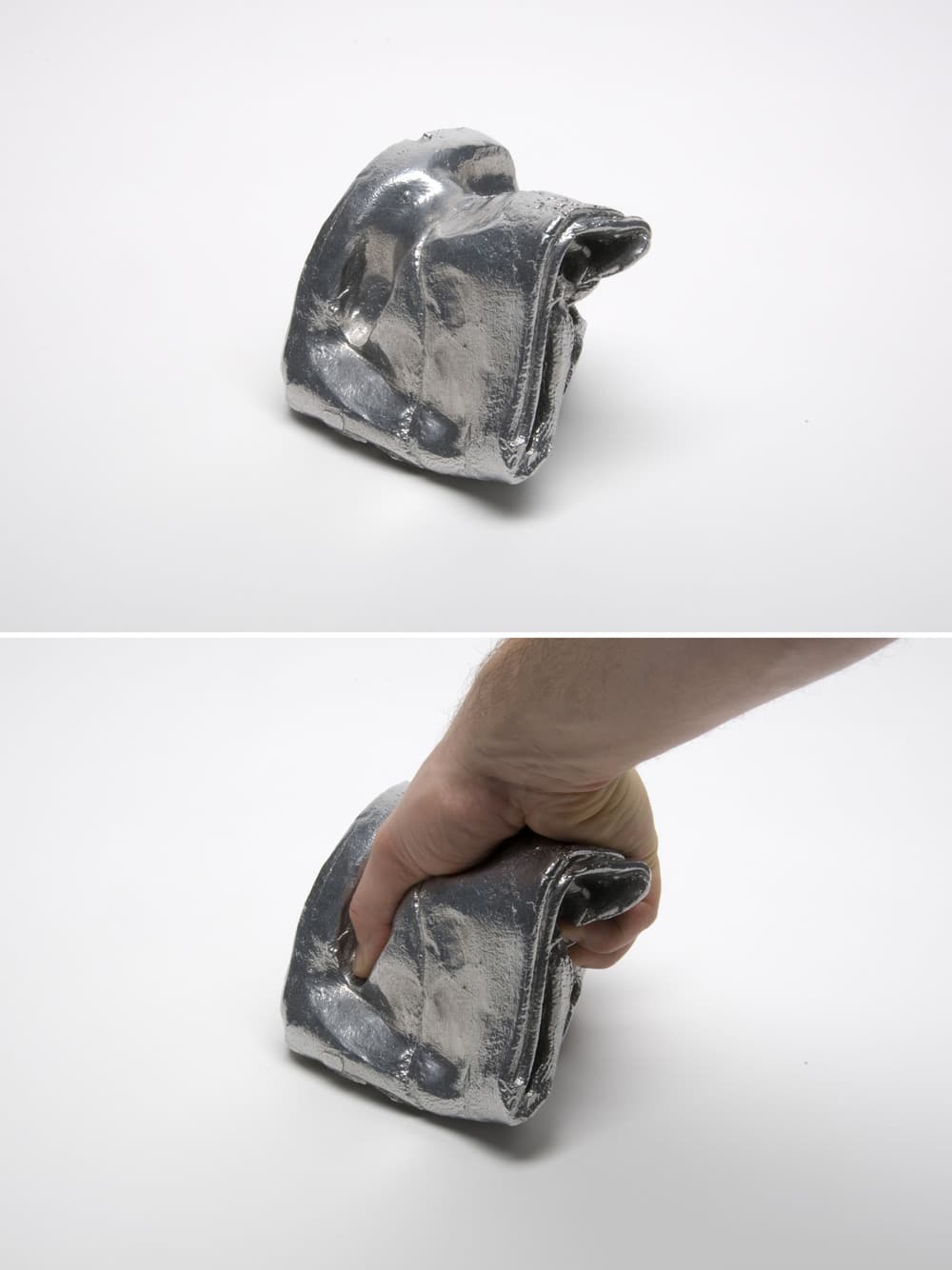
Image courtesy Marco Chiandetti/Ancient and Modern
‘There are far fewer gestures in the world than there are individuals,’ says Milan Kundera in Immortality (1990), and it follows that there are far fewer gestures in the history of art than there are artists. Gesture in art – the bodily engagement with physical matter, let’s say – is drawn from a narrowing repertoire of strategies, like a gradually refined recipe. Yet we remain bodies in space, and the unique ability of objects to be metonymic of their makers allows them to remain emotive markers of somatic absence. Those very limitations, in fact, enable works of art to collapse historical distance through the re-treading of known roads.
Ancient & Modern’s series of dialogues between artists of divergent generations continues in their show of Marco Chiandetti (b. 1973) and Rudolf Polanszky (b. 1951), both of whom address Bruce Nauman’s legacy of the body caught in traces and objects. Take Chiandetti’s six bright aluminium casts (all Untitled, 2012) of pliable matter, thumped and stretched into small tsunamis. Like saintly relics, each acts as a witness to physical actuality, their gouged surfaces calling up the heels of spectral hands, the dents of distant knuckles. In Chiandetti’s charcoal works on paper (all Untitled, 2012), explosions of dark matter, like mushroom clouds in negative, give testament to a body in heightened stress. Made by hurling material against a surface, Chiandetti’s works recast the studio as boxing ring: violence recollected in tranquillity.
Where Chiandetti’s works figure the creative body as taut and assertive, channelling Richard Serra’s tough-guy late-1960s performances, Polanszky’s 1983 Koma, Night and Sleep Drawing engages with an alternative tradition of markmaking: the automatic. In a kind of slacker retread of Carolee Schneemann’s Up To and Including Her Limits (1973–6), the artist attached paint-dipped brushes and crayons to his body and tried to fall asleep on a paper surface. Made over four sessions of extended seminapping, the resulting work (also a Super-8 film, called Koma, 1983) is a storm of swabbed, swiped and dragged colours. Like Robert Rauschenberg’s Bed (1955), Polanszky’s roiled surface implies an erotic release of fluids as well as the unwilled motion of the dreaming mind. And yet Polanzsky’s colour scheme, each pegged to a different body part during different bouts of sleeping, suggests an attempt, if quixotic, to make sense of the body’s erratic motion. As in his earlier film Zu einer Semiologie der Sinner (1976) – in which the artist films his own descent into drunkenness, hand-colouring the film reel according to the gestures (smoking, drinking, vomiting) he makes – there’s a theme of the mind making sense of the body. In both artists’ works, matter becomes a receptacle for a diagnostic analysis of the body’s oddness. And in their awkwardness – the heavy chunks of metal, the light skein of charcoal dust, the clods of paint on frayed surface – they enact bodily metaphors that retain currency as long as minds remain incarnate.
- Published in Art Review magazine, June 2012